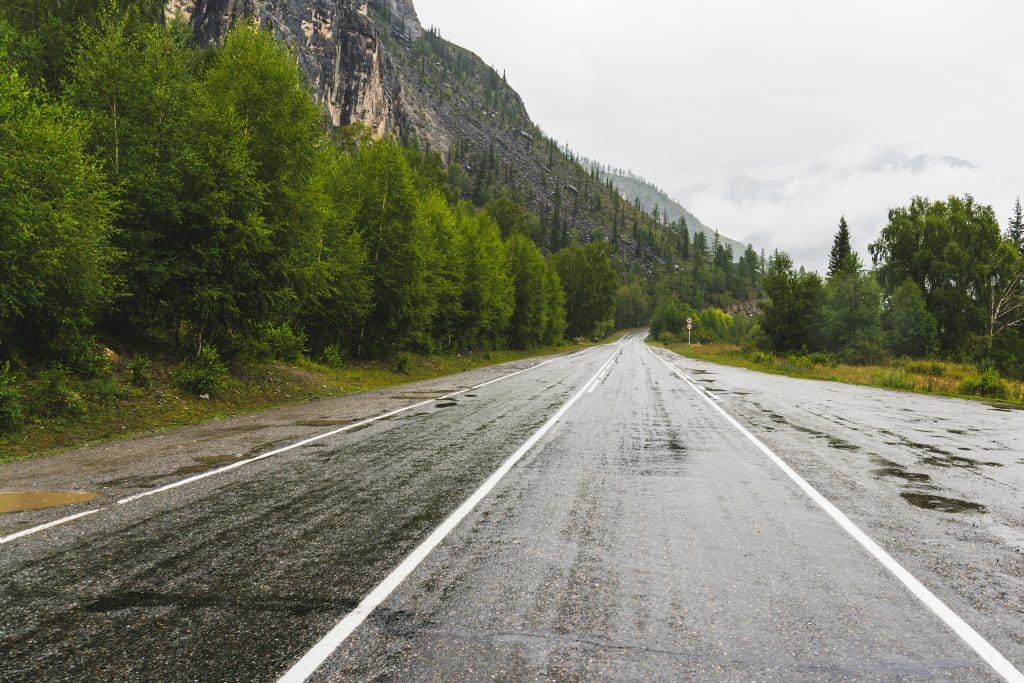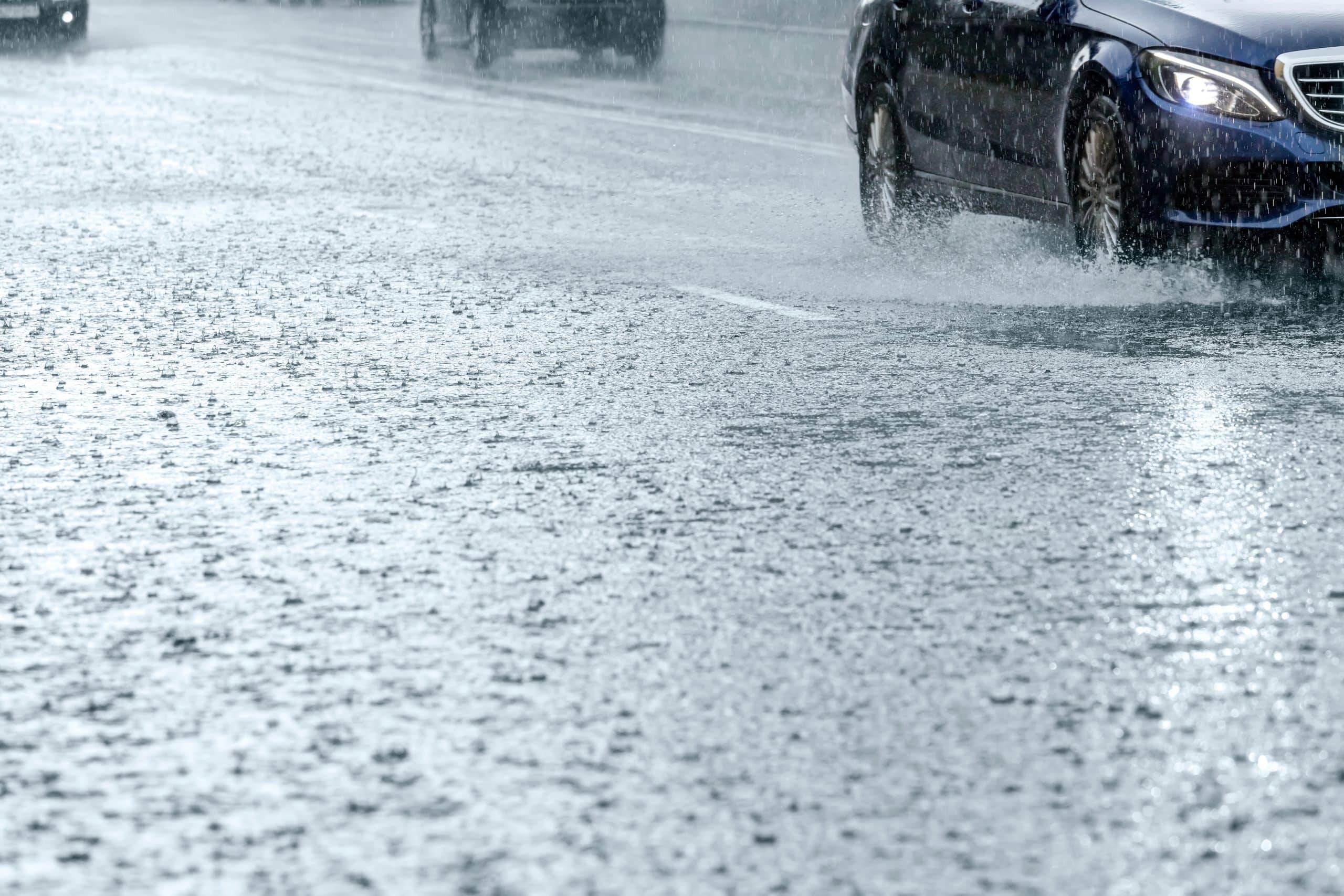Driving in winter is often dangerous, especially when it’s rainy or just below freezing. Hazardous road conditions like black ice can form, leaving an unsuspecting driver skidding into a scary situation. And when driving on a wet road, being aware of the most slippery road conditions can help you to stay safe.
But what conditions are the most slippery, and what are the best driving techniques you can use to stay safe? In this article, we’ll be taking an in-depth look at everything you need to know about staying safe on slippery roads.
When Are Roads Most Slippery?
Two road conditions are commonly known to be the most slippery: driving within the first 30 minutes after it’s started raining and driving when the temperatures are just below freezing. Both conditions result in extremely low traction and are responsible for causing many accidents, so it’s essential to keep yourself safe if you believe you might encounter either.
The Most Slippery Road Conditions to Avoid
Under 15 Minutes After Rain Starts
It’s not commonly known, but one of the most hazardous times to go driving is directly after it starts raining. If you want to stay completely safe, you should wait at home until it has rained for at least 10 minutes before attempting to drive.
As cars pass over the roadway, they leave oil and other waste that deposits into the asphalt. When it rains, this oil is drawn out of the asphalt and quickly makes the road extremely slippery. Heavy rain takes at least 10 minutes to wash this slippery oil away. Light weather conditions can take much longer for the oil to rinse off the road’s surface thoroughly.
If the weather had been dry for an extended period before it started raining, the oil on the road’s surface might be particularly dense. In other cases, if it rains almost every day, rain has little to no impact on how much traction the road has. In any case, you should always use extra caution when you’re driving in potentially slippery conditions.
Just-Below Freezing Temperatures
It’s not just built-up oil on the road’s surface that can cause a hazard when it rains. If the temperatures are just below freezing, dangerous black ice can quickly form on the surface of the roads — unfortunately, it’s almost impossible to spot.
When rain falls and sits on the surface of the road while the temperatures are below freezing, the water can quickly freeze into thin, invisible sheets of ice that eliminate the traction of the road. Since the black ice is impossible to spot, many drivers lose traction before they realize just how dangerous the road is — and unfortunately, unless they react appropriately, this can quickly cause a car accident.
Best Tips to Stay Safe on the Road
If you suspect you might have to drive through hazardous road conditions, such as roads with oil slicks or black ice, it’s essential to know how to keep yourself safe. Here are our best tips for staying safe on slippery roads. If you want to protect yourself fully, we also recommend reading about the worst driving habits to avoid.
Drive and Take Turns Slowly
There’s no better way to stay safe when driving on slippery roads than taking the process slowly. Driving slowly allows you to maintain complete control of your vehicle at all times, even when you need to make a turn in slippery conditions. It’s important to note that you should still drive at a speed similar to other drivers, as going too slowly can quickly become just as hazardous.
Allow a Larger Following Distance
One of the most hazardous aspects of driving on slippery roads is the complete lack of traction. Unfortunately, most rules of thumb for driving in typical conditions just don’t apply when navigating difficult conditions. If you attempt to use a regular following distance when driving in slippery conditions, you’ll be at a significantly increased risk of crashing. You should increase your following distance by five to ten seconds, depending on the severity of the road conditions.
Pump Your Brakes or Use ABS
Unfortunately, many drivers make the mistake of slamming on their brakes when they need to stop on a slippery road. This causes them to lose control of their vehicle completely, and often, regaining control is nearly impossible. If you need to stop while driving in slippery conditions, you should activate your car’s ABS or manually pump the brakes.
Avoid Accelerating Suddenly
Keeping control of your vehicle on a slippery road is a complex process. Just as maneuvers like turning too quickly or suddenly braking can cause your car to lose its grip on the road, accelerating too slowly can also cause you to lose control of your vehicle. Instead of accelerating suddenly, you should make incremental and small increases to your car’s speed as needed.
Turn Off Cruise Control
While cruise control is generally helpful, keeping it turned on when driving on slippery or hazardous roads can quickly introduce new dangers. Responding to slippery road conditions appropriately requires having complete control of your vehicle, and cruise control take away a significant portion of this control. If you suspect that you will be driving in dangerous conditions, you should turn off your cruise control before leaving.
Stay off the Road Until Conditions Are Safe
While there are a lot of driving techniques you can use to stay safe in hazardous road conditions, the best way to keep safe is to avoid the roads altogether. The consequences of a car accident can be catastrophic, and most journeys aren’t worth this potential risk when navigating dangerous road conditions. Every time you consider driving in hazardous conditions, it’s essential to think whether it’s better to wait carefully.
Stay Safe on the Road
Ultimately, your safety will always come before any reason you might be tempted to drive in dangerous conditions. It’s crucial to carefully evaluate whether any journey over difficult conditions like oil slicks and black ice is worth it. Of course, there are many situations where you might need to drive in dangerous conditions. You’ll find your next journey much more manageable if you use our tips for driving safely on slippery roads.



